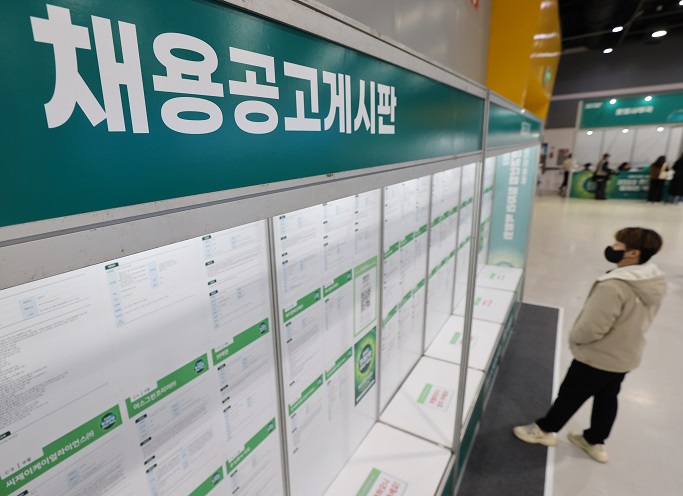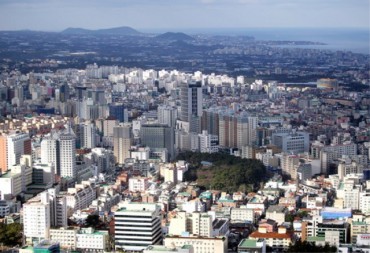
Jobseekers wait in line at a job fair held in Seoul, in this file photo taken on Nov. 16, 2022. (Yonhap)
SEOUL, Dec. 14 (Korea Bizwire) — South Korea added jobs for the 21st straight month in November, but the growth continued to slow for the sixth month in a row amid the central bank’s aggressive monetary tightening, government data showed Wednesday.
The number of employed people stood at 28.4 million last month, up some 626,000 from a year earlier, according to the data from Statistics Korea.
It marked the highest growth for any November since the agency adopted the current research methods in 1999.
The November figure, however, marked a slight drop from an on-year rise of 677,000 tallied the previous month.
Monthly job creation has been losing steam since peaking at 935,000 in May.
South Korea’s jobless rate fell 0.3 percentage point on-year to 2.3 percent in November, the lowest since 1999, the data showed,
The growth was primarily led by those aged 60 and older, which accounted for 479,000, or 76.5 percent of the on-year gain. People in their 50s and 30s took up 92,000 and 66,000 of the new jobs, respectively, the data showed.
The number of new jobs taken by those in their 20s and 40s, however, slipped 4,000 and 6,000, respectively, over the period.
The unemployment rate for those aged between 15 and 29 moved up 0.2 percentage point on-year to 5.7 percent.
“While the number of employed people continued to rise, the growth has slowed, and both the number of unemployed and economically inactive population has decreased,” Kong Mi-suk, a senior Statistics Korea official, told reporters.
Last month, new jobs were mainly created in the accommodation, restaurant, health care and manufacturing industries, the data showed.
In contrast, those in the retail, insurance and transportation sectors lost ground.

A job seeker reads notices on a bulletin board at a job fair held in Seoul on Nov. 30, 2022. (Yonhap)
The finance ministry said South Korea is expected to maintain its employment rate at the November level throughout 2023, although the country may have no further room for additional growth.
The employment rate among those aged 15 and above came to 62.7 percent last month, up 1.5 percentage points from a year earlier, an all-time high level for any November.
“Inflation, rate hikes, and slowing exports, along with the base effect, are expected to give downward pressure (on the jobs market),” the ministry said in a statement, pointing out an adjustment is inevitable next year considering the “unprecedented” growth observed in 2022.
The latest data came amid the central bank’s aggressive monetary tightening aimed at taming inflation. A hike in borrowing costs typically weighs down employment as businesses and households cut their spending.
In sync with the global central banks’ hawkish monetary policy, the Bank of Korea has hiked the rate by a combined 2.75 percentage points since August last year, eventually lifting it to 3.25 percent at this year’s final rate-setting meeting in November.
The South Korean economy, meanwhile, faces concerns over a recession amid persistent inflation and weak exports.
Consumer prices, a key gauge of inflation, rose 5 percent last month from a year earlier, compared with a 5.7 percent increase in October, separate data showed earlier.
South Korea is widely expected to post a trade deficit this year for the first time since 2008 as well.
This year’s exports had reached $644.3 billion as of Saturday, up 6.8 percent on-year. Imports, meanwhile, increased at a wider margin of 20.1 percent to hit $691 billion on high energy costs, resulting in a deficit of $47.4 billion.
(Yonhap)






